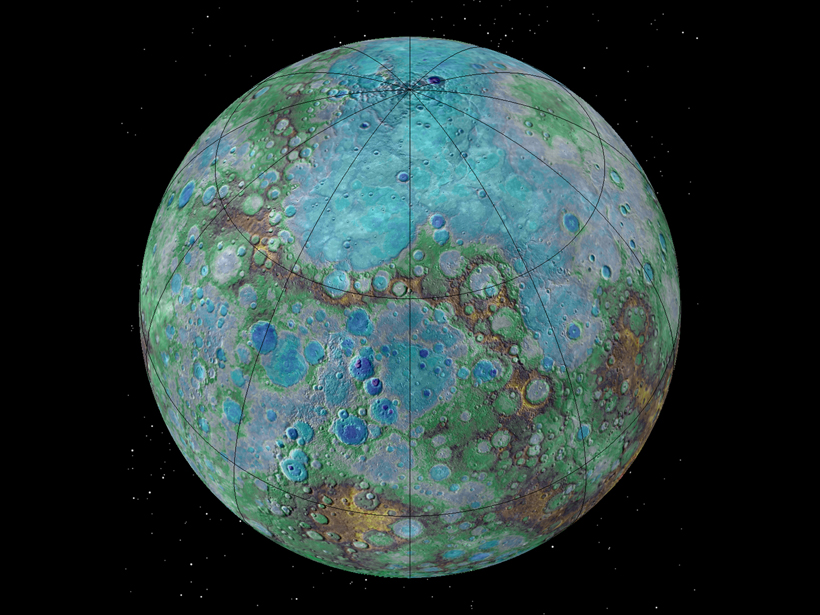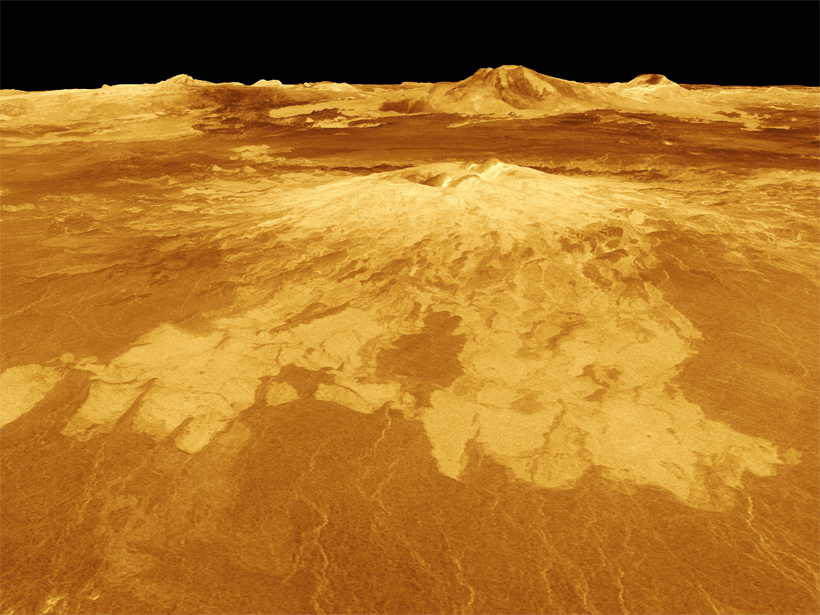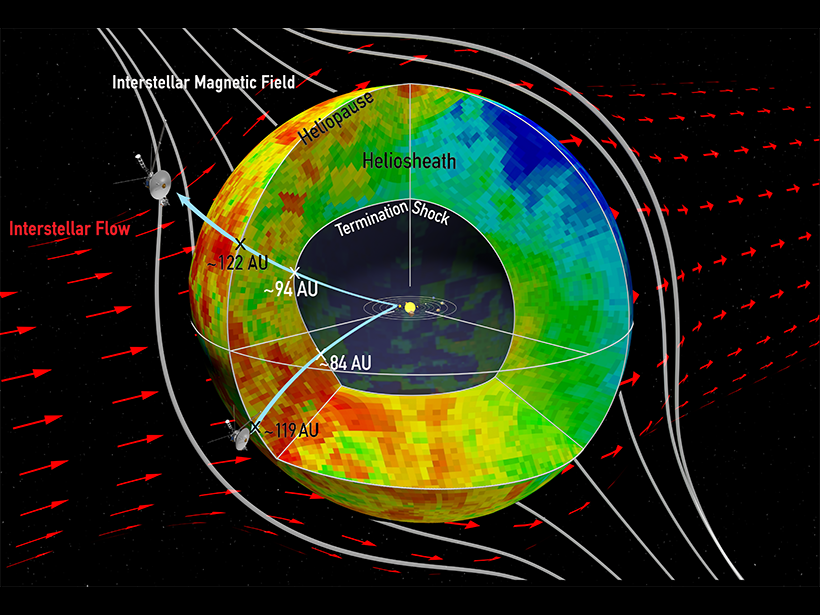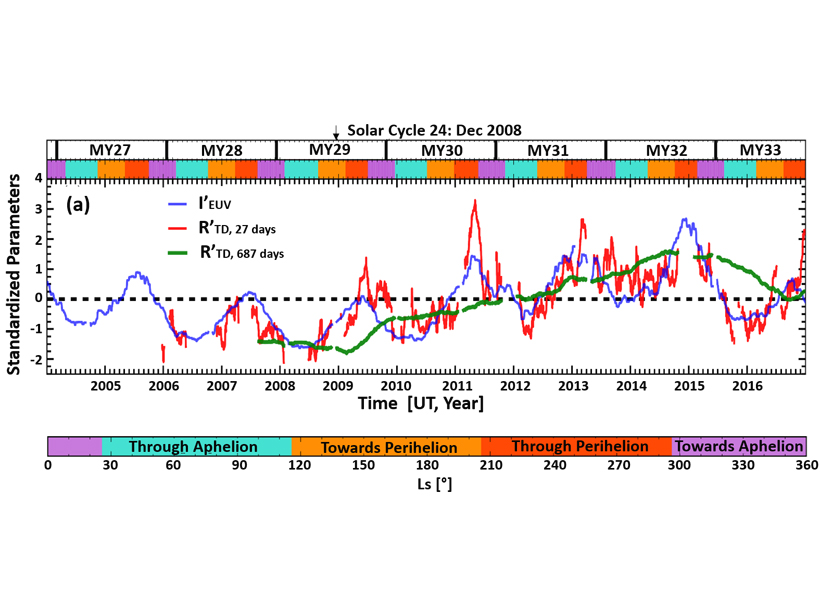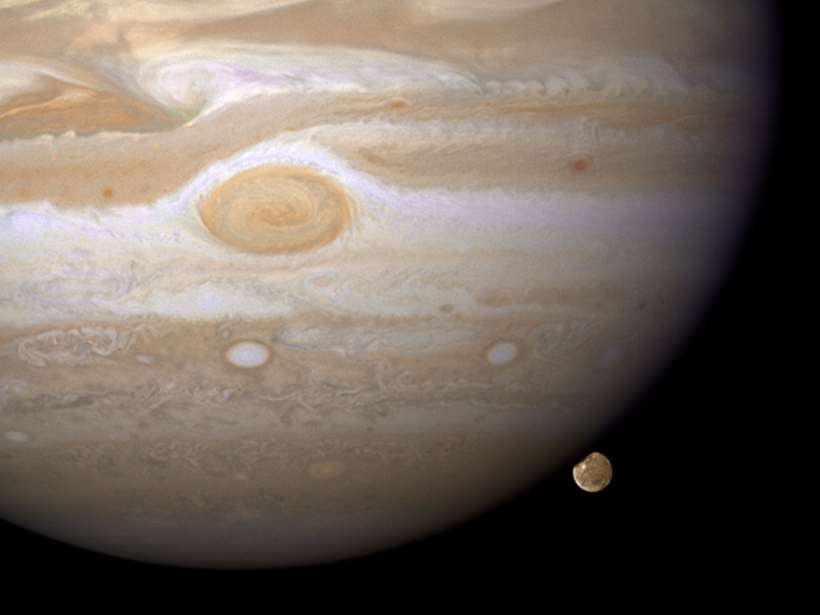Earth’s not the only thing that shakes and quakes and goes around the Sun. Not by a long shot.
solar system
A New Approach to New Worlds
This month we look around our solar system—and much farther—as we celebrate AGU’s Centennial.
Sampling the Space Between the Stars
Data from the Cassini and Voyager spacecraft reveal new information about the Sun’s magnetic bubble.
Solar Properties Rival for Control of Mars’s Bow Shock
While most planetary bow shocks are controlled by the solar wind, at Mars the solar EUV flux is equally important.
Planetary Low Tide May Force Regular Sunspot Sync Ups
A regular alignment of the planets—no, it’s not pseudoscience—makes a strong enough tug to regulate the Sun’s 11- and 22-year cycles.
No Underground Magma Ocean on Jupiter’s Fiery Moon?
A new study suggests alternative explanations for Io’s unusual magnetic field.
New Tiny Moon of Neptune Discovered
The moon’s size and orbit point to it being the remnant of a collision with Neptune’s moon Proteus.
New Horizons Spacecraft to Reach Farthest Body in Solar System Yet
The flyby of Ultima Thule on New Year’s Day will give us our first glimpse of a mysterious Kuiper Belt object.
Ten New Moons Discovered Around Jupiter
The newly plotted moons of Jupiter include one “oddball” that orbits in the wrong direction and may be the remnant of a head-on collision.
Anatomy of a Flux Rope Hurtling Through the Solar System
Pancaking and erosion can explain a lot of the structural change in magnetic flux ropes as they fly evolve during their supersonic flight through the inner solar system.

